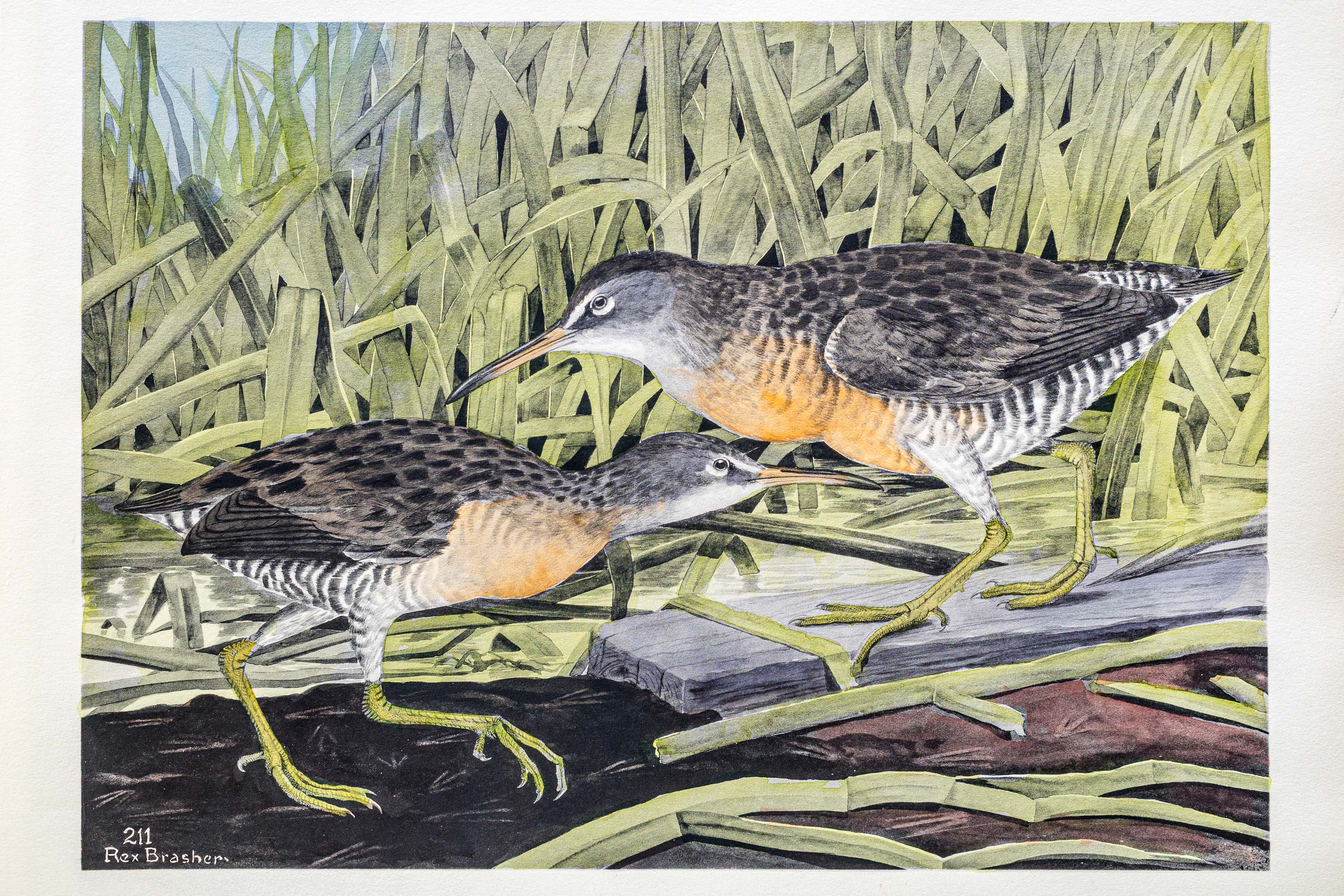






Unknown
1930
4
211
A team of dedicated board members, volunteers, and student interns has published every page in Volume 9. This volume includes 360 images of paintings and lyrical descriptions of birds, now available online for everyone to enjoy anywhere in the world. This is a monumental task. Each volume requires approximately 400 hours to photograph, edit, transcribe, catalog, and publish online. We need your support to complete this work.
If you're tech-savvy, have a good eye, are meticulous with details, and love structured data, please consider volunteering by emailing us at hello@rexbrasher.org.
We encourage all bird lovers and supporters to consider a monetary donation to support our mission to make Rex's work available for everyone. You can provide a one-time or recurring donation online.
"It was not uncommon for an egger to gather 100 dozen Rail eggs in a day." . . . . .
In the light of such destruction the CLAPPER RAIL is an outstanding example of the capacity for survival. From Long Island [New York] to Florida I found them more or less common at end of last century and in many localities abundant. They are strictly salt water marsh birds altho a few wander into brackish swamps. Their habit of arching the nests with sedge canopies enables a searcher to spot them from a distance. Some observers believe this interlacing is not done until the complement of eggs is laid but I have found many homes thus covered, with sets incomplete.
Inside Debs Inlet, between Long and Far Rockaway beaches [New York] was a small horseshoe backwater which was a favorite anchorage. One side was a narrow sandstrip, the other was marshland. At low tide Clappers hunted along the mudbank while I watched and drew them from the sloop's cabin. Often the unsuspicious birds were within a dozen feet of the porthole. They are buoyant but not swift swimmers, bobbing their heads back and forth. They are capable of swimming under water and seem to make almost as good progress there as they do on the surface.
It has always been a mystery to me how a bird so light can suddenly attain more specific gravity than water.
NEST: in or close to salt water marshes, on ground or a little above; well made of dry sedge, lined with finer grass.
EGGS: 6–14. Varying shades of buff, ivory to pale olive, irregularly blotched and spotted with different shades of brown.
Salt marshes of Atlantic Coast from southeastern Maine to northeastern North Carolina.